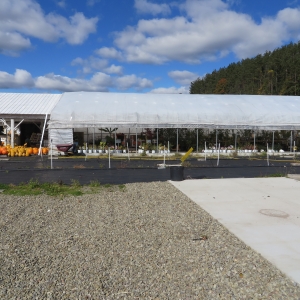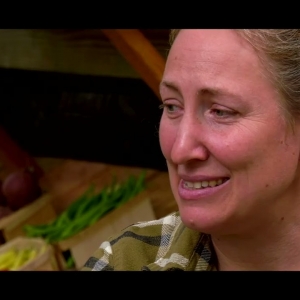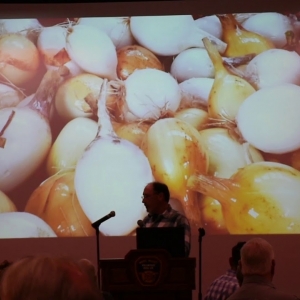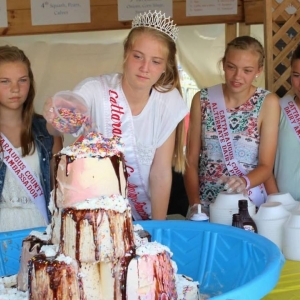Other Ag News:
(Washington, D.C., April 30, 2025) – U.S. Secretary of Agriculture Brooke Rollins today hosted Charles and Heather Maude at the U.S. Department of Agriculture headquarters alongside U.S. Secretary of Homeland Security Kristi Noem and members of Congress to address the senseless politically motivated prosecution waged by the Biden Administration over 25 acres of federal land.
FOR IMMEDIATE RELEASE
Contact: Laura Zaks
National Sustainable Agriculture Coalition
press@sustainableagriculture.net
Tel. 347.563.6408
Release: The Strengthening Local Processing Act Addresses Critical Livestock and Poultry Supply Chain Issues, Bolstering Resilient Food SystemsNational Sustainable Agriculture Coalition (NSAC) applauds the Senate introduction of this bipartisan, bicameral, comprehensive bill to support small processing plants
Washington, DC, April 30, 2025 – Today, Senator John Thune (R-SD), Senator Tina Smith (D-MN), Representative Chellie Pingree (D-ME), and Representative Jim Baird (R-IN) have reintroduced the Strengthening Local Processing Act (SLPA) in both chambers of Congress. SLPA is a comprehensive bill that promotes competitive agricultural markets and invests in economic development by addressing acute livestock supply chain issues, supporting small meat and poultry processing plants, and promoting training programs that will bolster the resilience of communities and their food systems.
“NSAC applauds Senators Thune and Smith, and Representatives Pingree and Baird for leading the way on this bill, which will address real needs for small processing plants and the producers they serve, and foster a stronger sustainable livestock sector overall. NSAC and small processors across the country are pleased to see the introduction of this bill, which reflects key priorities identified by our Coalition members and partners engaged in the regional processing sector,” said Connor Kippe, NSAC policy specialist.
SLPA will help catalyze a much needed expansion of choice for consumers, workers, farmers, and USDA. There is a need to build greater capacity among independent processors to meet the growing demand for regionally and sustainably produced meat.
The bill includes support for small plants’ compliance with Hazard Analysis and Critical Control Points (HACCP) plans; increased cost share for state meat and poultry inspection programs; increased cost share and expansion of the Cooperative Interstate Shipment Program; a grant program to expand small plants, including small and very small federally inspected plants; and an education and training grant program.
“Our 16 years of research, education, and providing technical assistance related to the viability of small and mid-scale meat processors shows that the solutions proposed by the Strengthening Local Processing Act are thoughtfully designed and will address persistent challenges that our processor members frequently share with us,” said Rebecca Thistlethwaite, Director of the Niche Meat Processors Assistance Network. “SLPA gets at some of the core and complex challenges in the sector that many other bills have not addressed.”
“The Strengthening Local Processing Act offers necessary resources that small-scale USDA facilities like ours have been advocating for. The appropriate allocation of these resources, as proposed in the Strengthening Local Processing Act, will allow establishments like ours to continue to survive and thrive during these immensely challenging times,” noted Nichole Sargent, Owner, Southpaw Packing Company, INC. (DBA Windham Butcher Shop), based in Windham, Maine.
“The programs created and enhanced in this bill are absolutely necessary for the safe processing and distribution of meat in our nation,” said Ben Meyer, co-owner at Revel Meat Company in Canby, Oregon. “As we have seen in the past years, relying on large, consolidated meat processing facilities to dominate our domestic markets leave consumers at dangerous risk of losing access to safe, clean meat from the local ranchers who produce it.”
Small processors are also excited to see a focus on scale-appropriate regulations, and support for education for the next generation of small-scale and niche meat processors. The bill will help support a wider variety of processing, as it promotes the scale of plants that work best with a wider variety of often smaller-herd producers, such as bison, goat, and sheep.
“The National Bison Association fully supports the Strengthening Local Processing Act, as the bison industry needs more small processor capacity to meet the needs of our growing sector of American Agriculture. The bison industry processes just .02% of what the beef industry processes annually in the United States, and our largest bison processing plant, by far, has less than 270 employees. This legislation is critically important as bison producers across the United States are more and more connecting directly to consumers seeking naturally raised local bison meat,” stated Jim Matheson, Executive Director of the National Bison Association.
This type of investment in plants will not only help farmers, ranchers, and processors but will also have multiplier effects in their local communities and for construction, retail, and other small businesses.
The following organizations endorse the Strengthening Local Processing Act:
- The National Sustainable Agriculture Coalition
- The Association of American Meat Processors
- The Niche Meat Processors Assistance Network
- The American Grassfed Association
- The National Bison Association
- The American Pastured Poultry Producers Association
###
About the National Sustainable Agriculture Coalition (NSAC)The National Sustainable Agriculture Coalition is a grassroots alliance that advocates for federal policy reform supporting the long-term social, economic, and environmental sustainability of agriculture, natural resources, and rural communities. Learn more: https://sustainableagriculture.net/
The post Release: The Strengthening Local Processing Act Addresses Critical Livestock and Poultry Supply Chain Issues, Bolstering Resilient Food Systems appeared first on National Sustainable Agriculture Coalition.
(Washington, D.C., April 30, 2025) - In the first 100 days of the Trump Administration, U.S. Secretary of Agriculture Brooke Rollins has taken action to support the leadership of President Donald J. Trump and put Farmers First at the United States Department of Agriculture (USDA).
(Washington, D.C., April 29, 2025) - U.S. Secretary of Agriculture Brooke Rollins visited Texas with U.S. Health and Human Services (HHS) Secretary Robert F. Kennedy Jr. to discuss food security and learn how America’s farmers are working to Make America Healthy Again. During the visit, Secretary Rollins met at the Texas A&M Beef Center to provide an update on the status of the New World Screwworm.
(College Station, T.X., April 29, 2025) – U.S. Secretary of Agriculture Brooke Rollins today announced a second round of payments coming this week for specialty crop producers through the Marketing Assistance for Specialty Crops (MASC) program, providing up to $1.3 billion in additional program assistance. U.S. Department of Agriculture’s (USDA) Farm Service Agency (FSA) already delivered just under $900 million in first round payments to eligible producers.
(Washington, D.C., April 29, 2025) - In the first 100 days of the Trump Administration, U.S. Secretary of Agriculture Brooke Rollins has rolled out a five point plan to lower the cost of eggs, worked to expand market access for American farmers, and empowered rural communities.
(Washington, D.C., April 28, 2025) - Today, the Trump Administration announced bold action to put farmers and ranchers first by dropping criminal charges against Charles and Heather Maude, a South Dakota family who has a small cattle and hog operation. This family has endured a senseless politically motivated prosecution waged by the Biden Administration over 50 acres of federal land. Government resources for prosecution should be focused on true criminals, not a family farm trying to make ends meet.
(Washington, D.C., April 28, 2025) – U.S. Secretary of Agriculture Brooke Rollins visited Ohio with Governor Mike DeWine to talk firsthand farmers and discuss how USDA is working to support family farms and stop the spread of Highly Pathogenic Avian Influenza (HPAI).
(Washington, D.C., April 28, 2025) – U.S. Secretary of Agriculture Brooke Rollins announces a major win for American agriculture by securing the Mexican government to meet the current water needs of farmers and ranchers in Texas as part of the 1944 Water Treaty. The Mexican government committed to transfer water from international reservoirs and increase the U.S. share of the flow in six of Mexico’s Rio Grande tributaries through the end of the current five-year water cycle.
Pages
Signup for the Ag Newsletter
Get the freshest farm news, events and updates from in and around Cattaraugus County, NY at least once a month! Go signup!
Other ways to stay connected:
Get Involved in Farming
Resources for Starting a Farm in Cattaraugus County
Profile of Cattaraugus County soils
Agriculture Career Exploration
Questions about farming? Find out Who to Call











